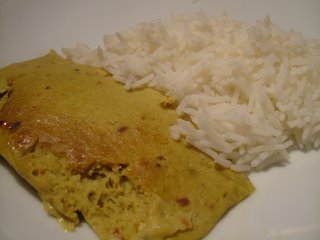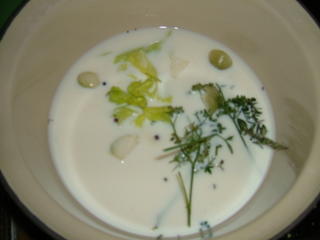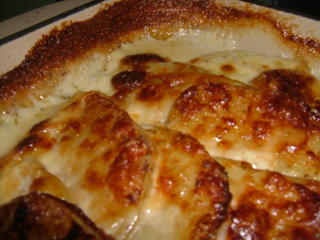This is a lovely starter (or a light meal on its own), and looks a lot more complicated than it actually is, making it a great stand-by for dinner parties. I’ve prepared my smoked mackerel pate in little ramekins, but you can also take spoonsful of the pate and wrap them, Chinese dumpling-style, in a sheet of smoked salmon tied tight with a string of chive if you want something particularly pretty to serve. The finished pate is quite stiff, so if you line your ramekins or another mould with an abundance of cling film (saran wrap for Americans) you will also be able to tug on the edges of the film once the dish is cooled and turn out the smoked mackerel pate onto a plate. Smoked fish fans in and around Cambridge should head out to the River Farm Smokery in Bottisham for some very superior smoked mackerel.
I’ve used a generous amount of horseradish here. If you can find the whole root for sale, grab it and use a coarse grater (swimming goggles can come in handy here for minimising something similar to the effects of mustard gas) on it. Otherwise, the English Provender company does freshly grated horseradish in a little jar, which you can also use to make your own creamed horseradish by folding it into some lightly whipped cream with a pinch of sugar, lemon juice, salt and pepper to taste.
I really like this pate with melba toast. See this crab pate recipe for instructions on how to make melba toast at home.
To make enough for a starter for four, or lunch for two, you’ll need:
200g smoked mackerel
200g soft cream cheese
Juice of 1 lime
2 tablespoons snipped chives
1 tablespoon snipped chervil (leave this out if you can’t find any – it’s easy to grow at home and worth cultivating, because it’s often hard to find fresh in the UK)
2 teaspoons freshly grated horseradish
Salt and pepper to taste
You don’t need any machinery here – simply peel the papery skins off the mackerel, check for any stray bones, then flake finely with a fork. Stir the flaked fish vigorously into the cream cheese and lime juice with your fork (if you don’t have any limes use a lemon – I prefer the aromatic nature of lime here, but lemon will be just fine), and fold in the herbs, horseradish and seasoning.
Pack the pate into ramekins and chill until you are ready to eat.








